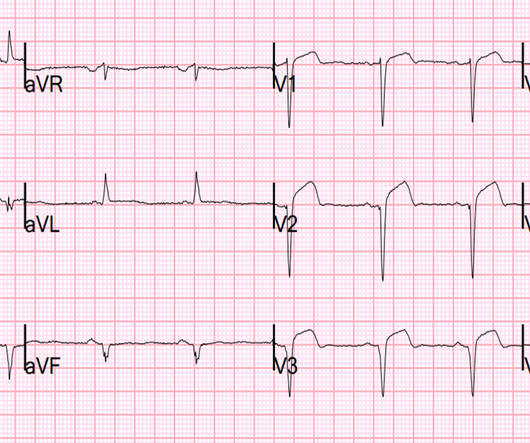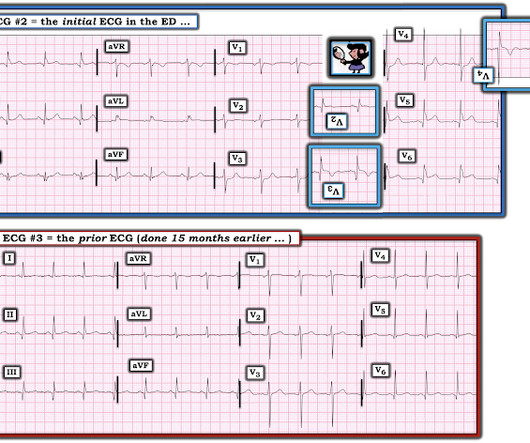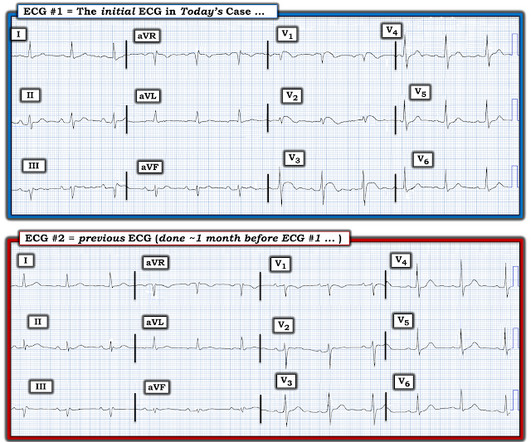Occlusion myocardial infarction is a clinical diagnosis
Dr. Smith's ECG Blog
DECEMBER 11, 2023
Recall from this post referencing this study that "reciprocal STD in aVL is highly sensitive for inferior OMI (far better than STEMI criteria) and excludes pericarditis, but is not specific for OMI." Her contrast enhanced echocardiogram is shown below in the parasternal short axis view. The case continues. Kontos, M. Levine, G.













Let's personalize your content